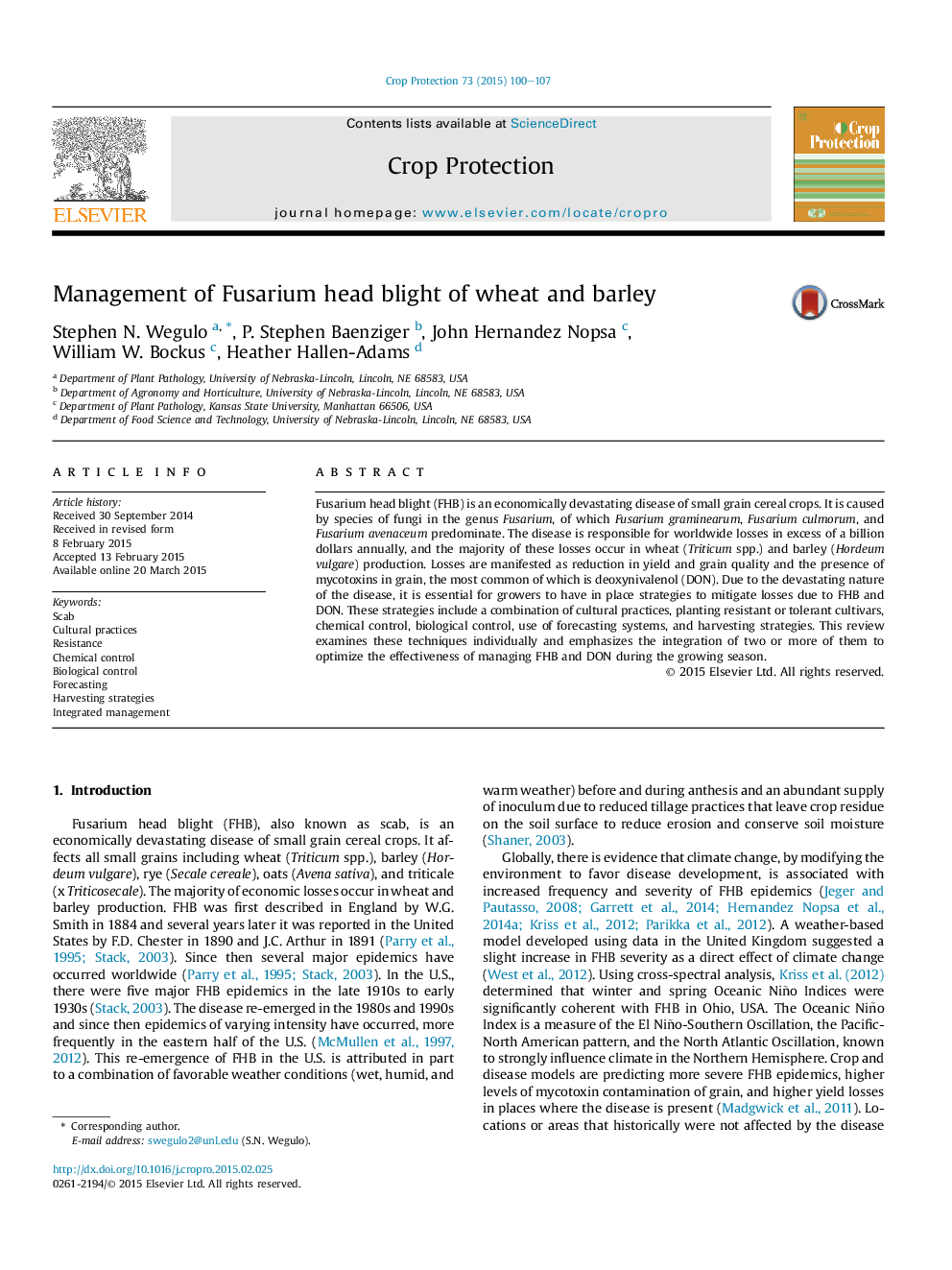| Article ID | Journal | Published Year | Pages | File Type |
|---|---|---|---|---|
| 4505777 | Crop Protection | 2015 | 8 Pages |
•Fusarium head blight (FHB) is a devastating disease of small grain cereal crops.•FHB is favored by warm temperatures and wetness before and during flowering.•FHB-causing Fusarium spp. produce mycotoxins in grain, mainly deoxynivalenol (DON).•Strategies for management of FHB and DON during the growing season are discussed.•Integrating two or more practices to manage FHB and DON is recommended.
Fusarium head blight (FHB) is an economically devastating disease of small grain cereal crops. It is caused by species of fungi in the genus Fusarium, of which Fusarium graminearum, Fusarium culmorum, and Fusarium avenaceum predominate. The disease is responsible for worldwide losses in excess of a billion dollars annually, and the majority of these losses occur in wheat (Triticum spp.) and barley (Hordeum vulgare) production. Losses are manifested as reduction in yield and grain quality and the presence of mycotoxins in grain, the most common of which is deoxynivalenol (DON). Due to the devastating nature of the disease, it is essential for growers to have in place strategies to mitigate losses due to FHB and DON. These strategies include a combination of cultural practices, planting resistant or tolerant cultivars, chemical control, biological control, use of forecasting systems, and harvesting strategies. This review examines these techniques individually and emphasizes the integration of two or more of them to optimize the effectiveness of managing FHB and DON during the growing season.
